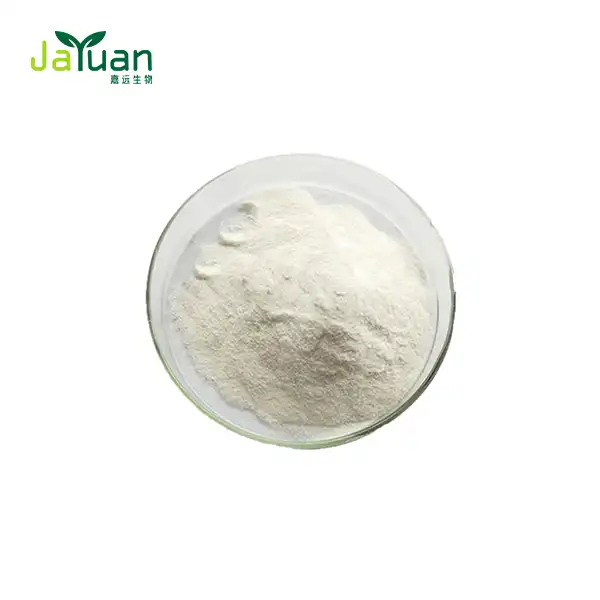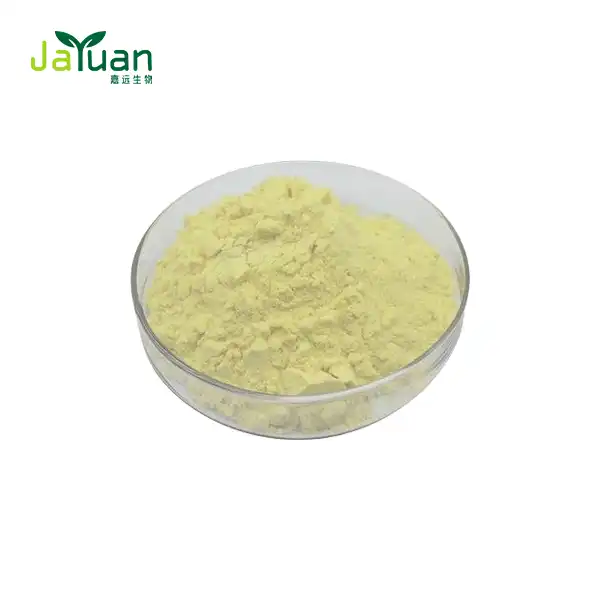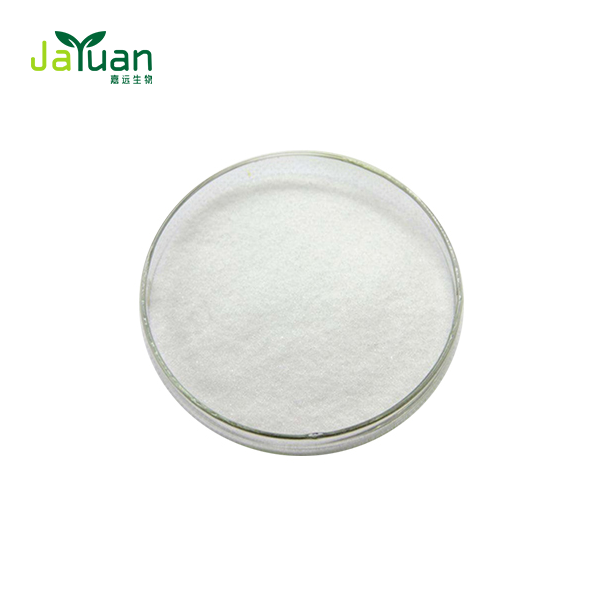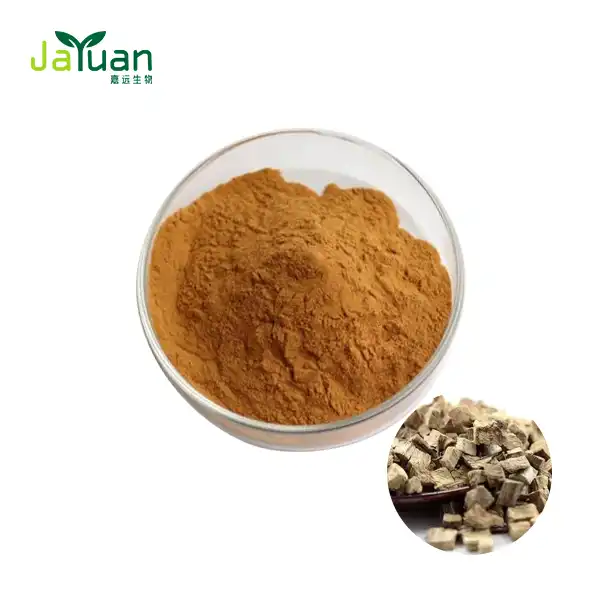7-Dehydrocholesterol Powder: The Science Behind Vitamin D3 Synthesis
Vitamin D3, also known as cholecalciferol, is a crucial nutrient for maintaining optimal health. But have you ever wondered how this essential vitamin is synthesized in our bodies? The answer lies in a fascinating compound called 7-dehydrocholesterol. In this article, we'll explore the intricate process of vitamin D3 synthesis, the importance of 7-dehydrocholesterol powder, and the optimal conditions for maximizing its conversion.
UVB conversion: How 7-Dehydrocholesterol becomes vitamin D3
The journey from 7-dehydrocholesterol powder to vitamin D3 is a remarkable example of biochemical transformation. This process, known as photolysis, takes place when our skin is exposed to ultraviolet B (UVB) radiation from sunlight, initiating a crucial step in the synthesis of vitamin D essential for health.

The Photochemical Reaction
When UVB rays penetrate the skin, they interact with 7-dehydrocholesterol molecules present in the epidermis. This interaction triggers a photochemical reaction that breaks open the B ring of the 7-dehydrocholesterol molecule, resulting in the formation of previtamin D3.
Thermal Isomerization
Following the initial photochemical reaction of 7-dehydrocholesterol, previtamin D3 undergoes a process called thermal isomerization. This spontaneous rearrangement of the molecule's structure occurs at body temperature, transforming previtamin D3 into vitamin D3 (cholecalciferol).
Transport and Activation
Once vitamin D3 is formed, it doesn't remain in the skin. Instead, it is transported to the liver via the bloodstream, where it undergoes the first step of activation. In the liver, vitamin D3 is converted to 25-hydroxyvitamin D (calcidiol). The final activation step occurs in the kidneys, where calcidiol is transformed into the biologically active form of vitamin D, known as 1,25-dihydroxyvitamin D (calcitriol).
Why 7-Dehydrocholesterol powder is crucial for vitamin D production?
The importance of 7-dehydrocholesterol powder in vitamin D synthesis cannot be overstated. It acts as the primary precursor molecule for vitamin D3 production in the skin, playing a vital role in the overall process. This makes it essential for maintaining sufficient and healthy vitamin D levels in the body.
Natural Occurrence and Supplementation
7-Dehydrocholesterol is naturally present in human skin, particularly in the epidermal layer. However, various factors can affect its concentration, including age, skin pigmentation, and overall health. In some cases, supplementation with 7-dehydrocholesterol powder may be beneficial to support optimal vitamin D production.
Versatility in Research and Development
Beyond its role in human health, 7-dehydrocholesterol powder is a valuable tool in scientific research. It enables researchers to study the mechanisms of vitamin D synthesis, develop new vitamin D analogs, and investigate potential therapeutic applications.
Quality Control in Vitamin D Supplements
In the manufacturing of vitamin D supplements, 7-dehydrocholesterol powder serves as a crucial raw material. Its purity and quality directly impact the effectiveness of the final product, making it an essential component in the supplement industry's quality control processes.

Optimal conditions for maximizing vitamin D3 conversion from 7-DHC powder
To ensure efficient conversion of 7-dehydrocholesterol to vitamin D3, several important factors must be taken into account. Understanding these conditions is crucial for optimizing vitamin D synthesis, whether it occurs naturally through sunlight exposure or in carefully controlled laboratory environments designed to mimic these processes.
UVB Exposure Duration and Intensity
The amount of UVB radiation and the duration of exposure play crucial roles in vitamin D3 synthesis. Optimal UVB wavelengths for vitamin D production range between 290-315 nm. However, it's important to balance UVB exposure with skin health, as excessive exposure can lead to sunburn and increase the risk of skin damage.
Skin Surface Temperature
The thermal isomerization of previtamin D3 to vitamin D3 is temperature-dependent. The process occurs most efficiently at body temperature (approximately 37°C or 98.6°F). Maintaining an appropriate skin surface temperature can enhance the conversion rate.
Skin Pigmentation Considerations
Melanin, the pigment responsible for skin color, can affect UVB absorption. Individuals with darker skin may require longer UVB exposure times to produce the same amount of vitamin D3 compared to those with lighter skin tones. This factor is important to consider when determining optimal conditions for vitamin D synthesis.
pH and Chemical Environment
The pH and chemical composition of the environment surrounding the 7-dehydrocholesterol molecules can influence the efficiency of the photochemical reaction. In laboratory settings, maintaining an optimal pH and chemical balance can enhance the conversion process.
Substrate Concentration and Purity
The concentration and purity of 7-dehydrocholesterol powder used in vitamin D3 synthesis can significantly impact the yield. Higher purity and optimal concentration levels can lead to more efficient conversion rates.
Antioxidant Presence
The presence of antioxidants can help stabilize the 7-dehydrocholesterol molecules and protect them from oxidative degradation. This can potentially improve the overall efficiency of vitamin D3 synthesis.
Understanding the science behind vitamin D3 synthesis from 7-dehydrocholesterol powder opens up exciting possibilities for enhancing vitamin D production and developing more effective supplements. As research in this field continues to advance, we may discover new ways to optimize this crucial biological process and improve overall health outcomes.
At Xi'an Jiayuan Bio-Tech, we are committed to providing high-quality 7-dehydrocholesterol powder and other plant extracts to support your research and product development needs. Our team of experts is dedicated to ensuring the purity and efficacy of our products, contributing to advancements in nutrition and health supplements.
If you're interested in learning more about our 7-dehydrocholesterol powder or other plant extracts, we invite you to reach out to our knowledgeable team. Contact us at sales@jayuanbio.com for more information on how we can support your vitamin D-related projects and research initiatives.

References
1. Holick, M. F. (2007). Vitamin D deficiency. New England Journal of Medicine, 357(3), 266-281.
2. Bikle, D. D. (2014). Vitamin D metabolism, mechanism of action, and clinical applications. Chemistry & Biology, 21(3), 319-329.
3. Wacker, M., & Holick, M. F. (2013). Sunlight and Vitamin D: A global perspective for health. Dermato-endocrinology, 5(1), 51-108.
4. Lehmann, B., & Meurer, M. (2010). Vitamin D metabolism. Dermatologic Therapy, 23(1), 2-12.
5. Holick, M. F. (2004). Sunlight and vitamin D for bone health and prevention of autoimmune diseases, cancers, and cardiovascular disease. The American Journal of Clinical Nutrition, 80(6), 1678S-1688S.
6. Norman, A. W. (2008). From vitamin D to hormone D: fundamentals of the vitamin D endocrine system essential for good health. The American Journal of Clinical Nutrition, 88(2), 491S-499S.








